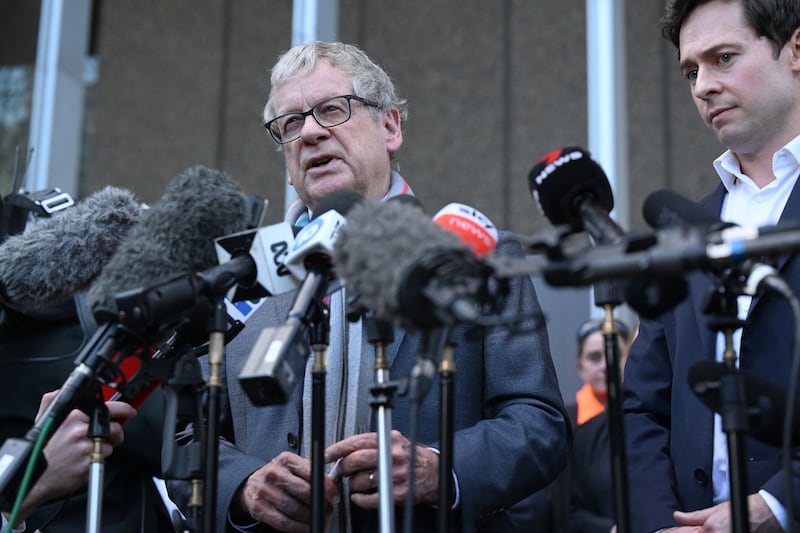It was billed as Australia’s defamation trial of the century, costing approximately €15.6 million and lasting 110 days. Two Australian journalists, Nick McKenzie and Chris Masters, were pitted against the country’s most decorated living soldier, Ben Roberts-Smith.
The journalists had accused Roberts-Smith of multiple murders of unarmed civilians in Afghanistan, and the former soldier proceeded to sue the newspapers that published the stories, namely the Sydney Morning Herald, Canberra Times and the Age. Federal court justice Anthony Besanko ruled overwhelmingly in favour of the newspapers, finding Roberts-Smith was, on the balance of probabilities, a murderer, a war criminal, a bully and a liar.
Australian civil courts require a lower threshold to prove allegations than criminal courts. Roberts-Smith has not been charged with any offences.
The judgment has huge ramifications for journalists across Australia. It has protected the pursuit of complex investigative stories. Masters and McKenzie took a huge professional risk in writing their stories on Roberts-Smith. They had to persuade soldiers within the Australian SAS to not only break their unit’s sacrosanct code of silence but to eventually stand up in court and testify against their colleague.
READ MORE
Roberts-Smith loomed large, physically and metaphorically. He stands at 6ft 7in and was decorated with the Victoria Cross in 2011 for valour in combat during his fifth tour of Afghanistan. He left the full-time army in 2013 and became general manager of the Channel Seven television network in Queensland.
He also became a popular corporate speaker, presenting on team building and courage under pressure. He was even voted Australia’s Father of the Year, with his medals on display at the Australian War Memorial in Canberra. Roberts-Smith defined Australian ideals of heroism, where its soldiers or “diggers” are revered. Many of the country’s Returned and Services League clubs still stand at silence at 6pm every evening in remembrance of dead soldiers.

In 2018, McKenzie and Masters published a story titled “SAS soldier accused of killing innocent villager”. It was the first of several articles that accused Roberts-Smith of multiple murders of unarmed civilians. It followed months of secret meetings with soldiers, slowly getting them to talk, and then eventually persuading their editors to publish. The journalists’ work came at a huge personal cost. McKenzie has spoken of suffering from severe anxiety.
The journalists knew that they weren’t just taking on a normal soldier, they were taking on a symbol of heroism and selflessness. Roberts-Smith is the son of an eminent judge, and his legal case was funded by the billionaire chairperson of the Seven Network Kerry Stokes. Their newspapers had shown courage in the editor’s office and now needed even more in the courtroom.
[ Australian veteran colluded with and threatend witnessess, trial judge findsOpens in new window ]
Justice Besanko found four murder allegations, all denied by Roberts-Smith, to be substantially true. They included kicking a handcuffed farmer off a cliff before he was shot dead. A captured Taliban fighter was shot in the back, before his prosthetic leg was taken back to the barracks and used as a drinking vessel by Roberts-Smith and his men. Finally, two murders were ordered or agreed to by Roberts-Smith to initiate new soldiers into his unit.
Roberts-Smith’s ruthlessness was also uncovered in the case through his bullying behaviour towards fellow soldiers. He told one soldier, “if your performance doesn’t improve on our next patrol you’re going to get a bullet in the back of the head.” Roberts-Smith continued his bullying behaviour during the case, using a private investigator to mail threats to soldiers who were considering testifying against him.
The odds were not in favour of the newspapers entering the courtroom. Masters, a veteran journalist still working in his 70s, had gained the trust of many SAS soldiers during his time embedded with them during tours of duty. He had confided with McKenzie that there were whispers that Roberts-Smith was not the man he appeared to be. The journalists combined to form a formidable team known for their detailed research and fact-gathering. It was this meticulousness and their powers of persuasion that helped to win a case that many in the media thought was impossible.
Roberts-Smith was a man used to getting his own way. He came from a life of privilege and transformed into a hero who single-handedly overpowered Taliban machine-gunners to win the Victoria Cross. He had the backing of powerful supporters and many Australians who didn’t believe that a soldier should be judged during the “fog of war”. The witnesses from his unit thought differently and stood up against Roberts-Smith. It was a victory not only for investigative journalism but for the pursuit of the truth in war.
















